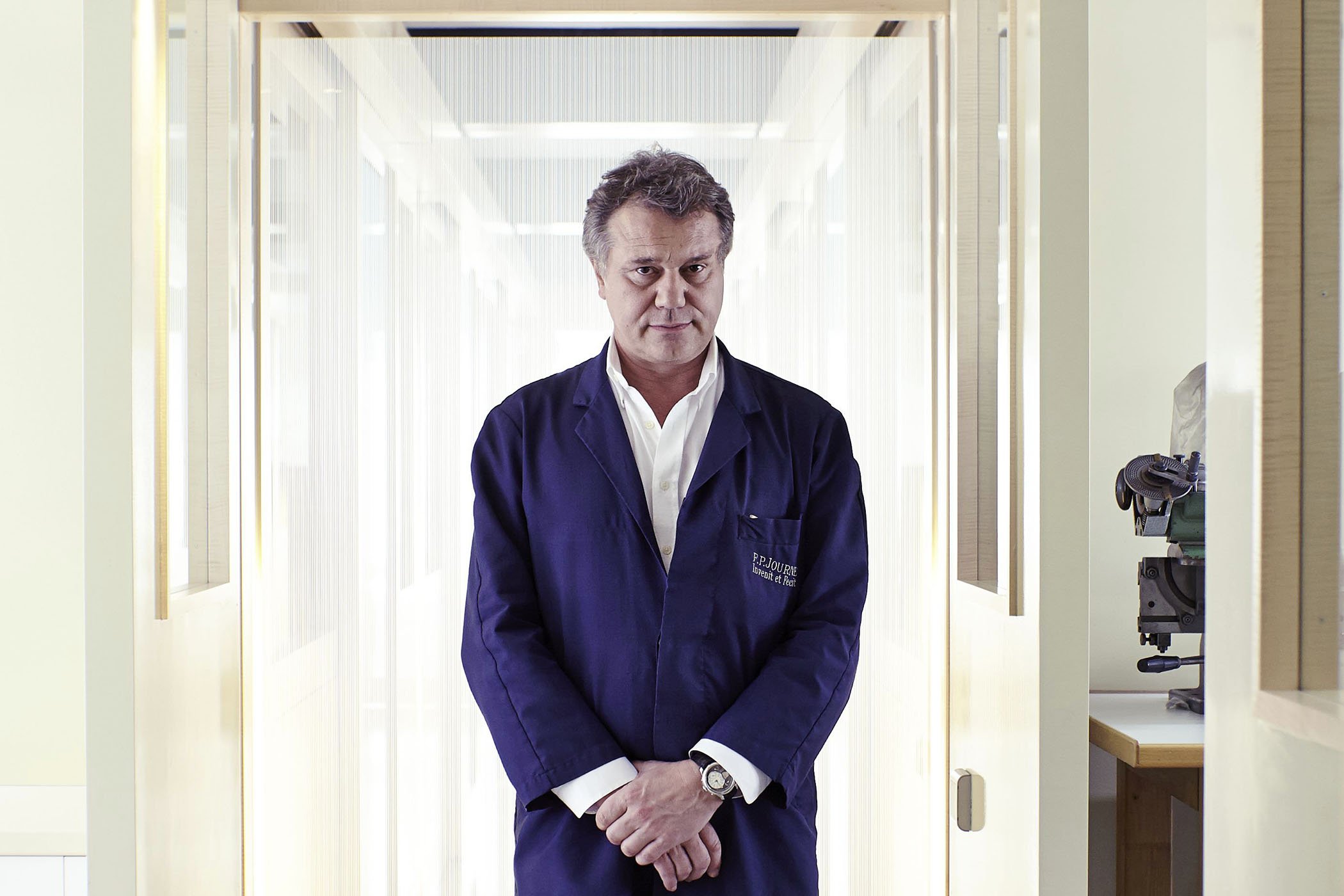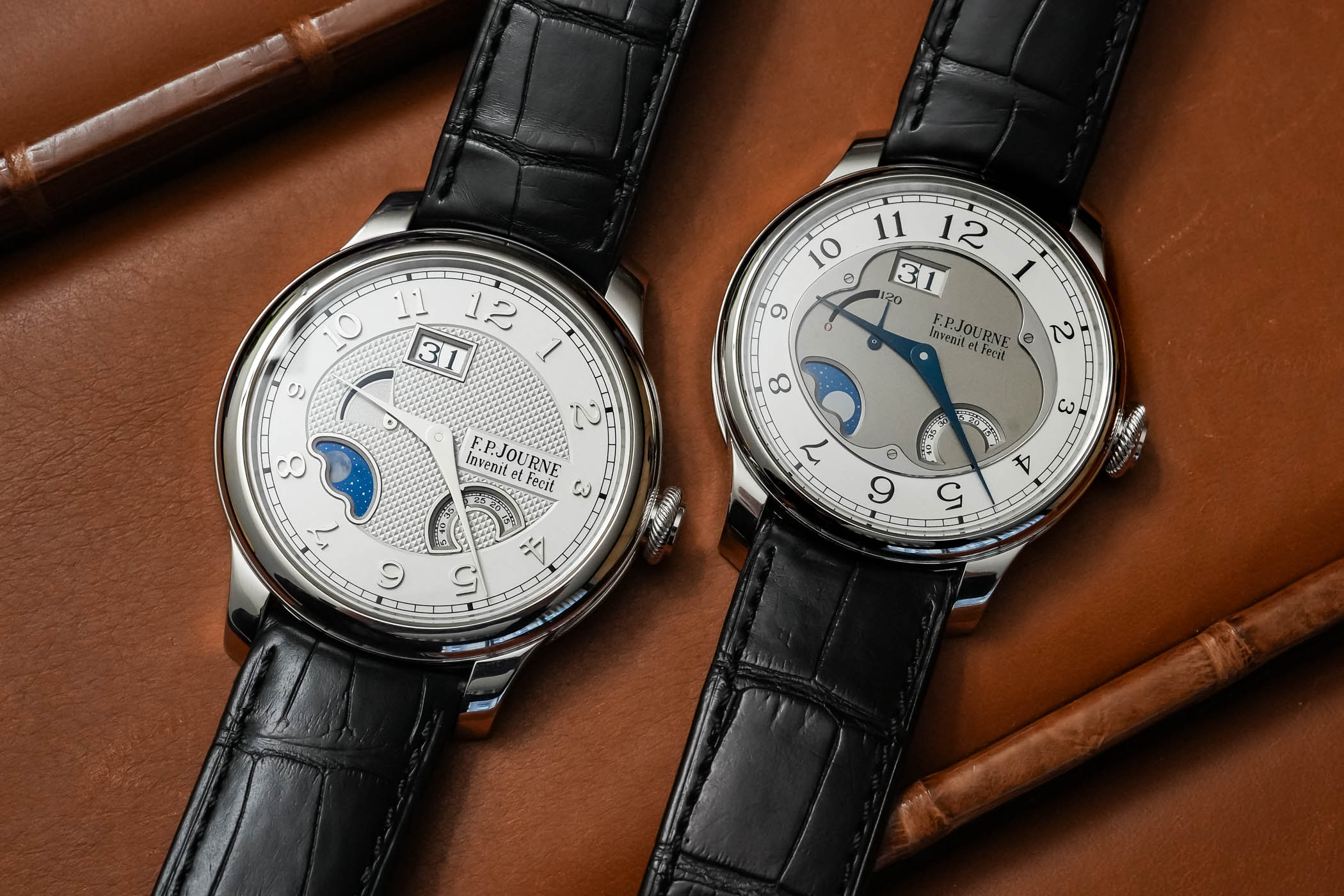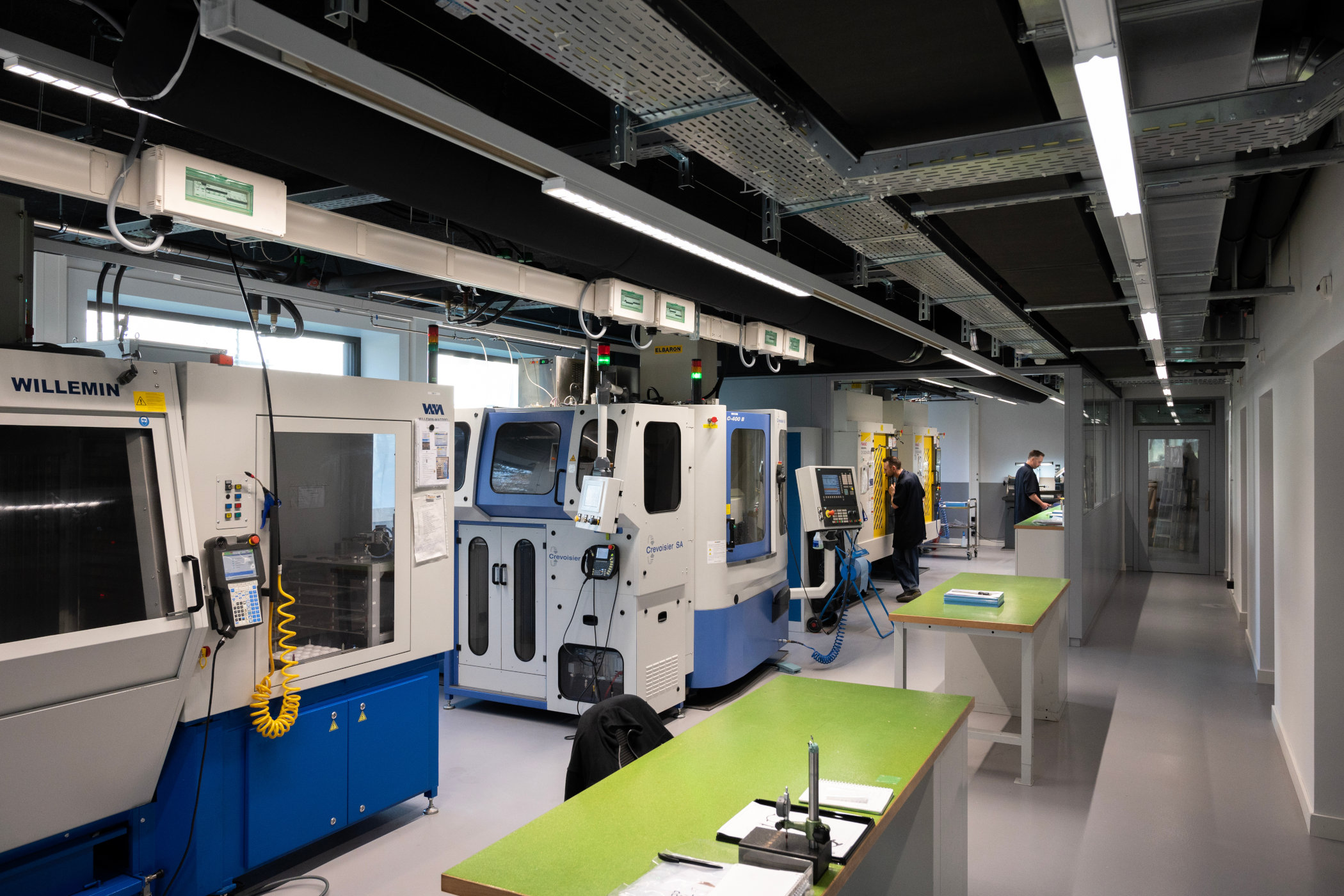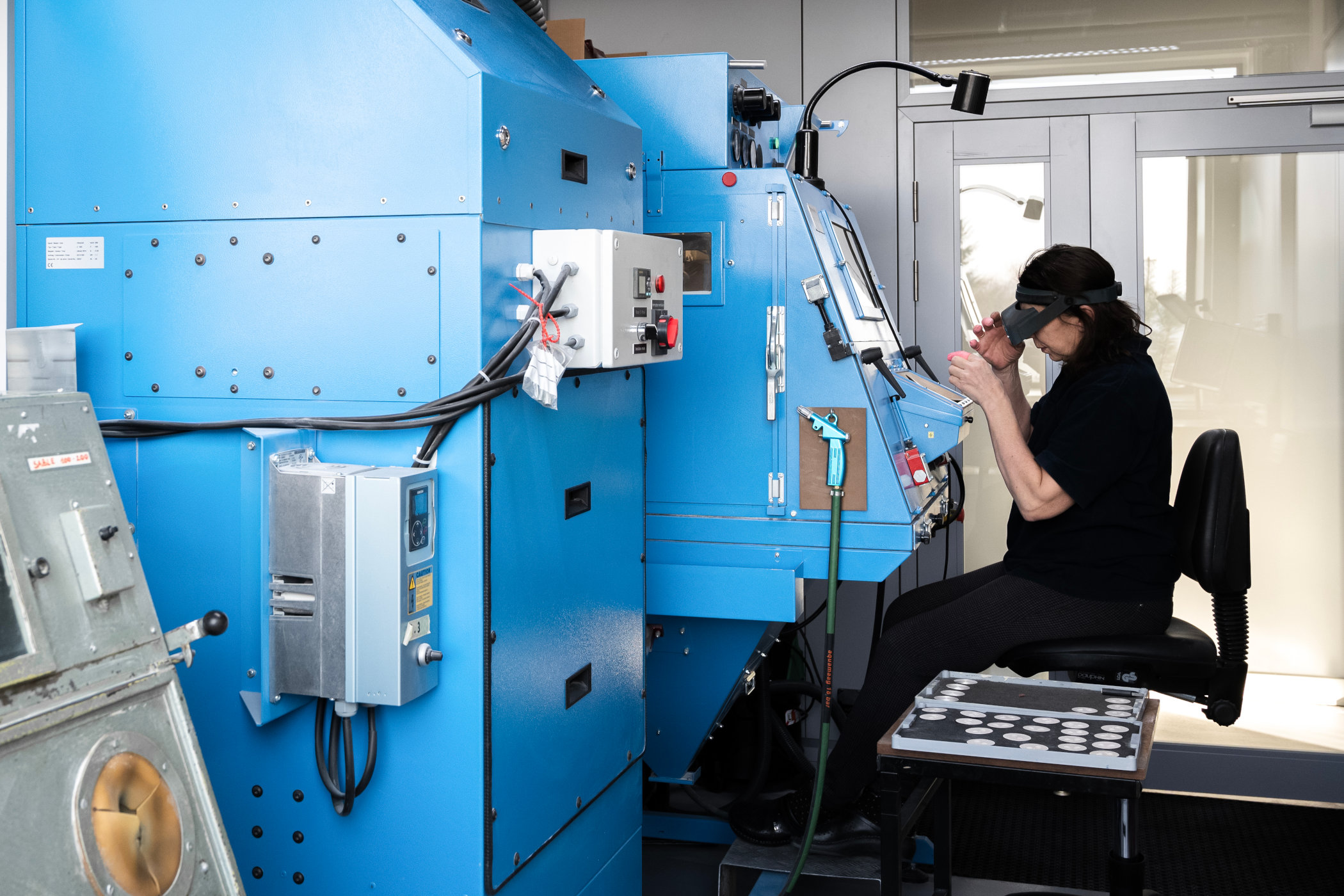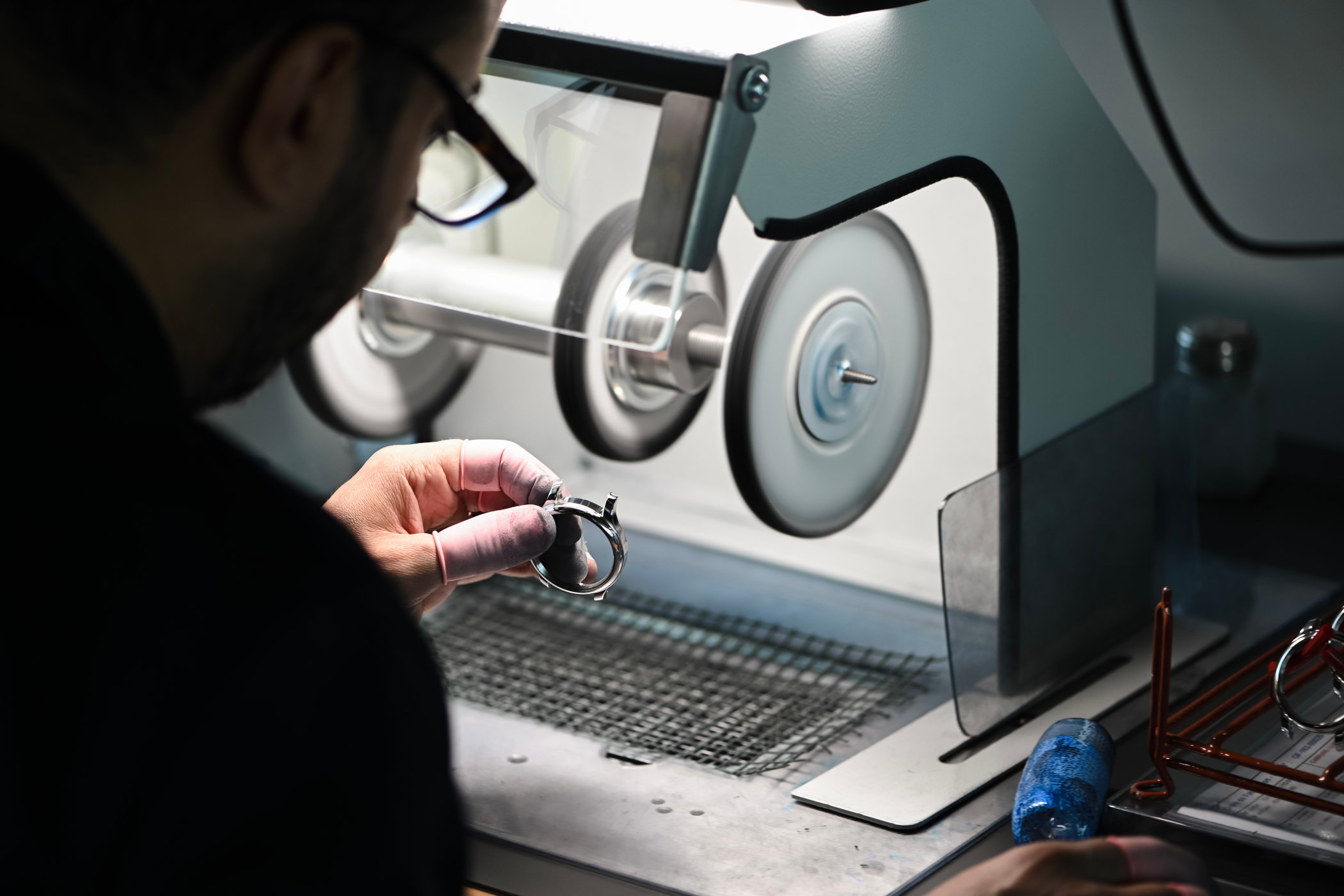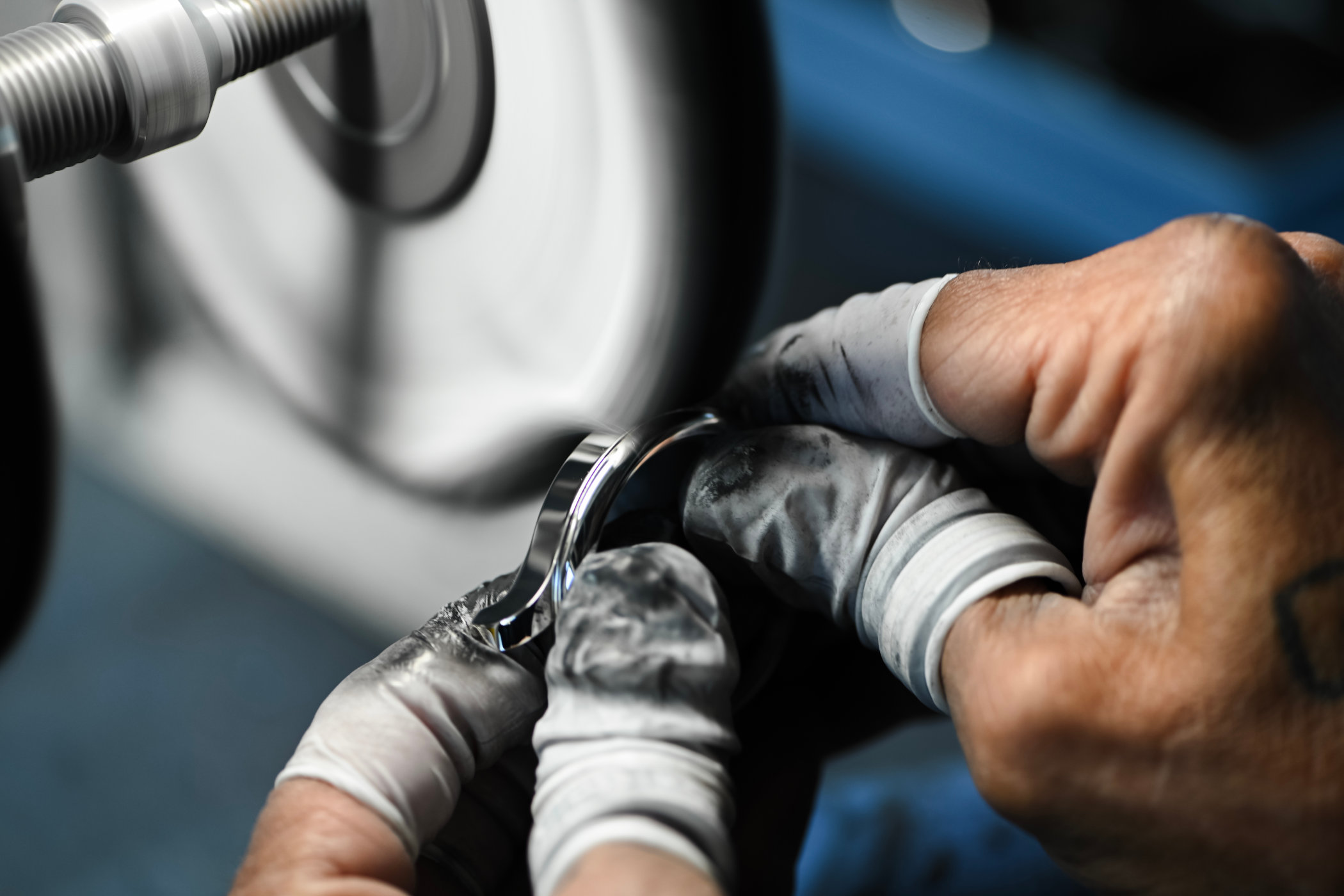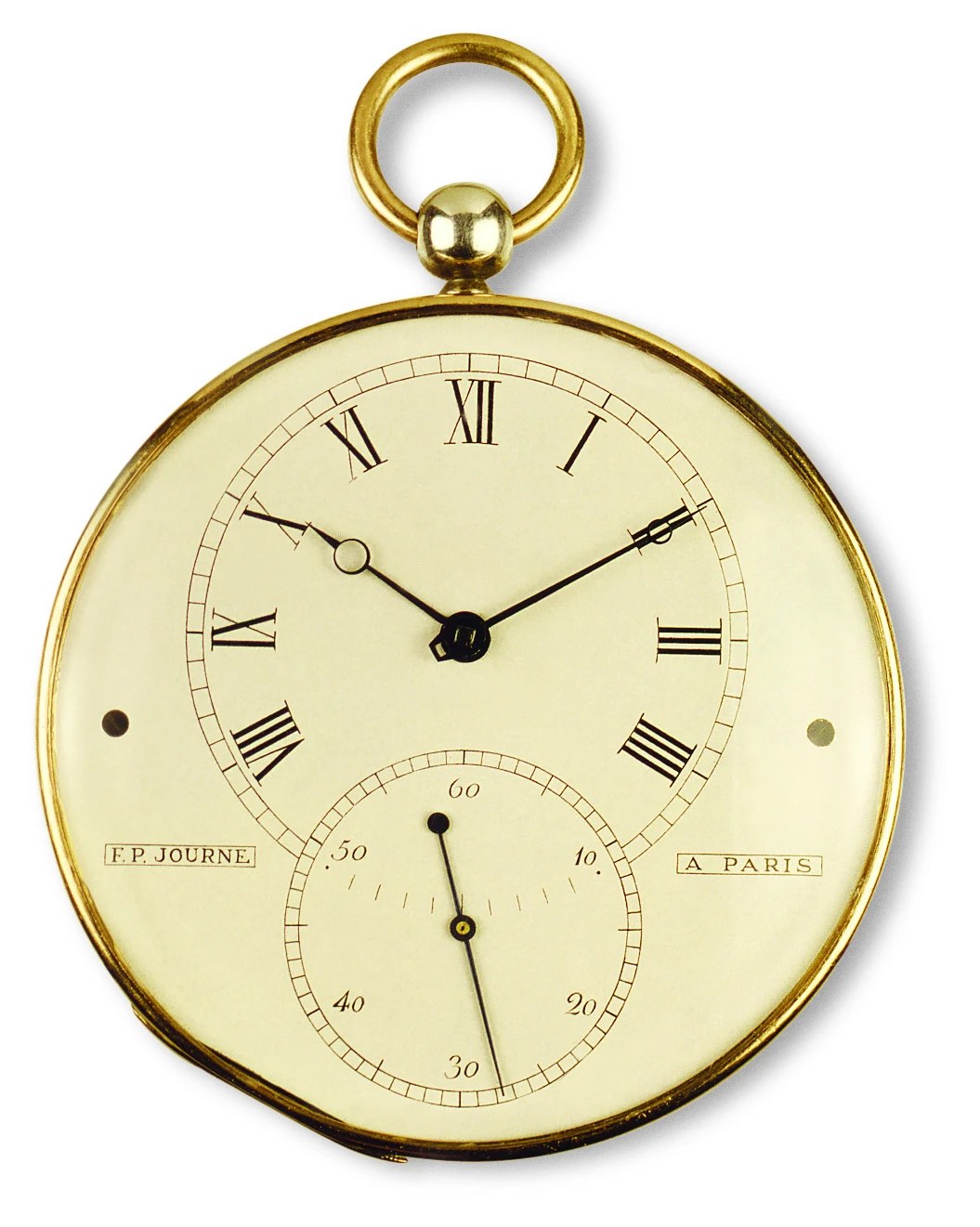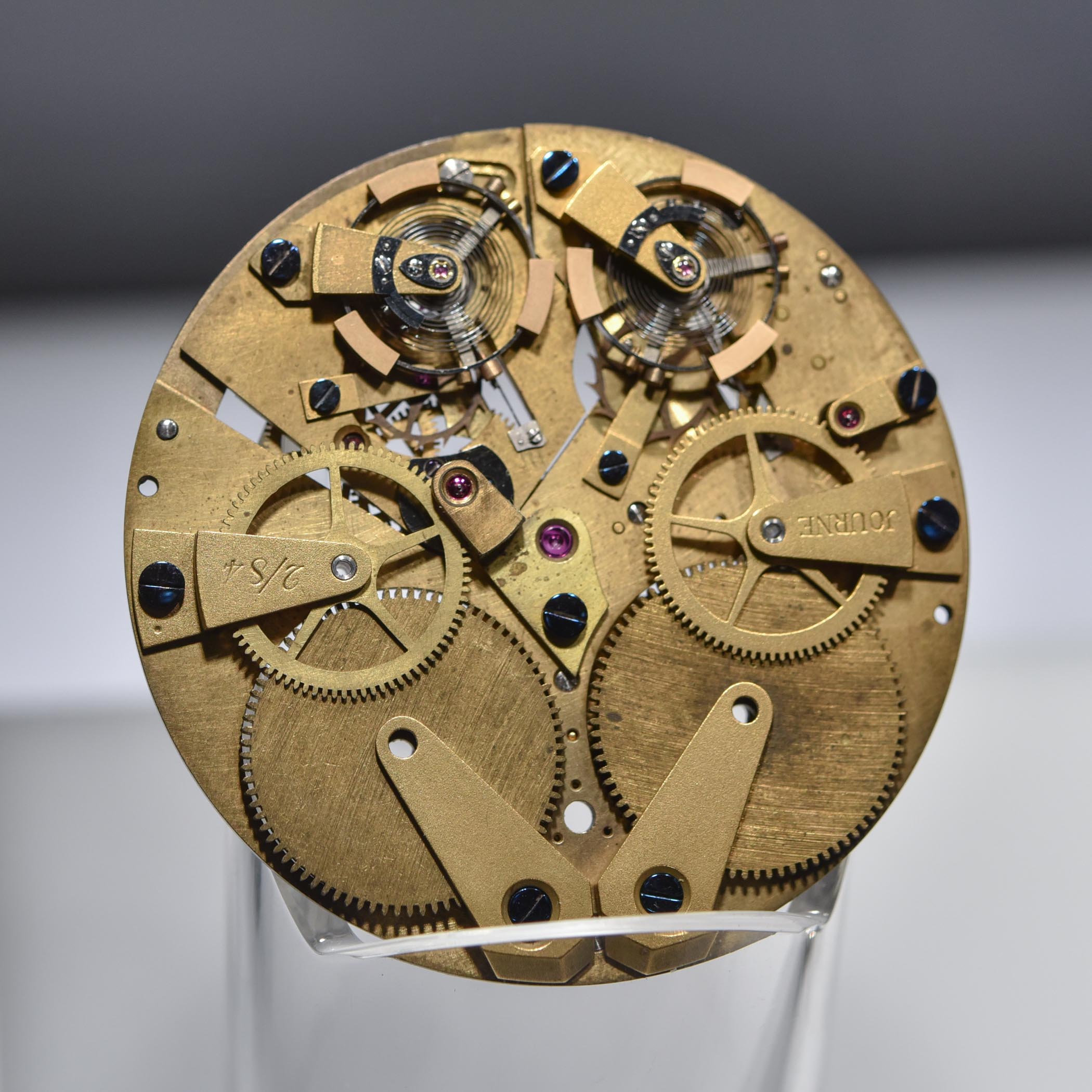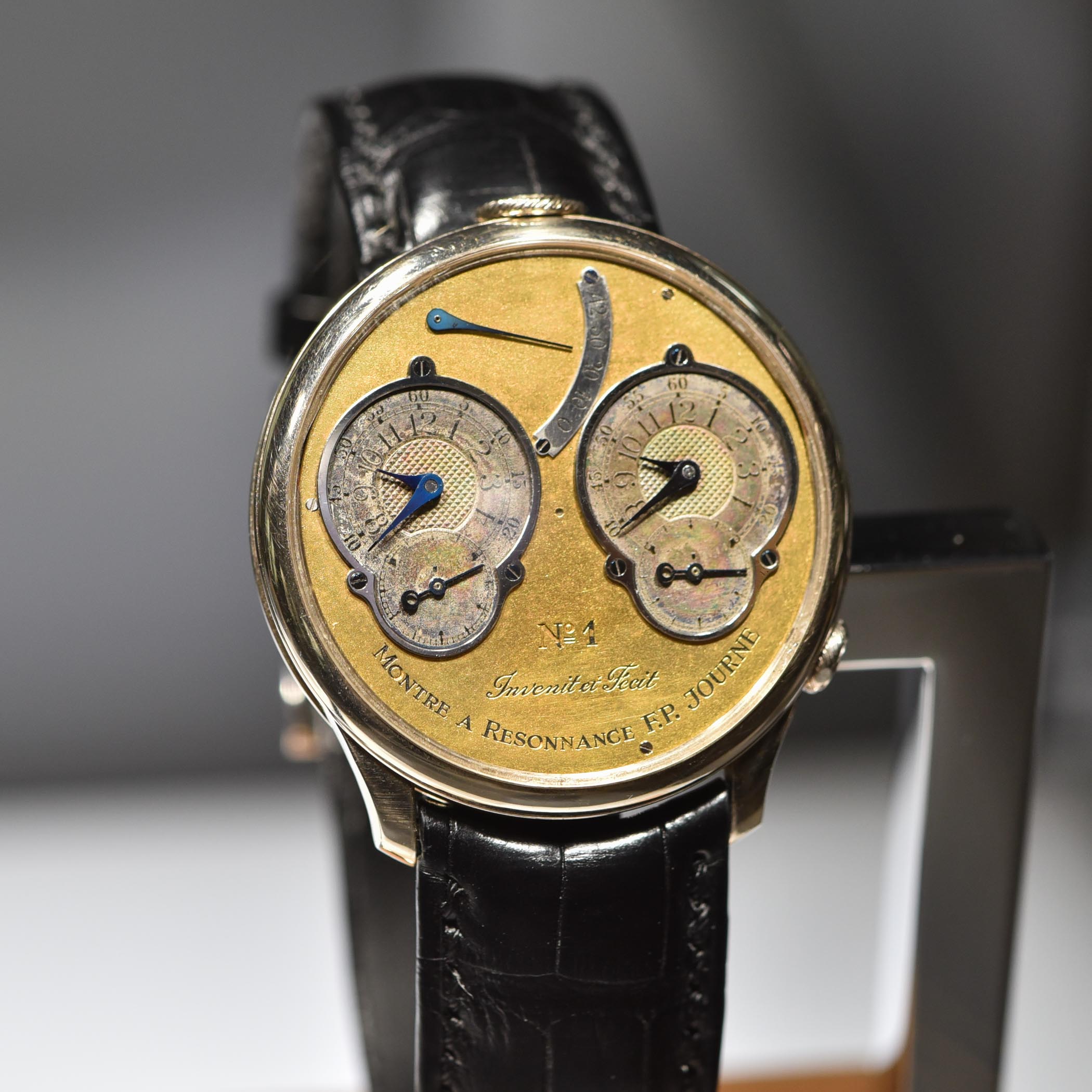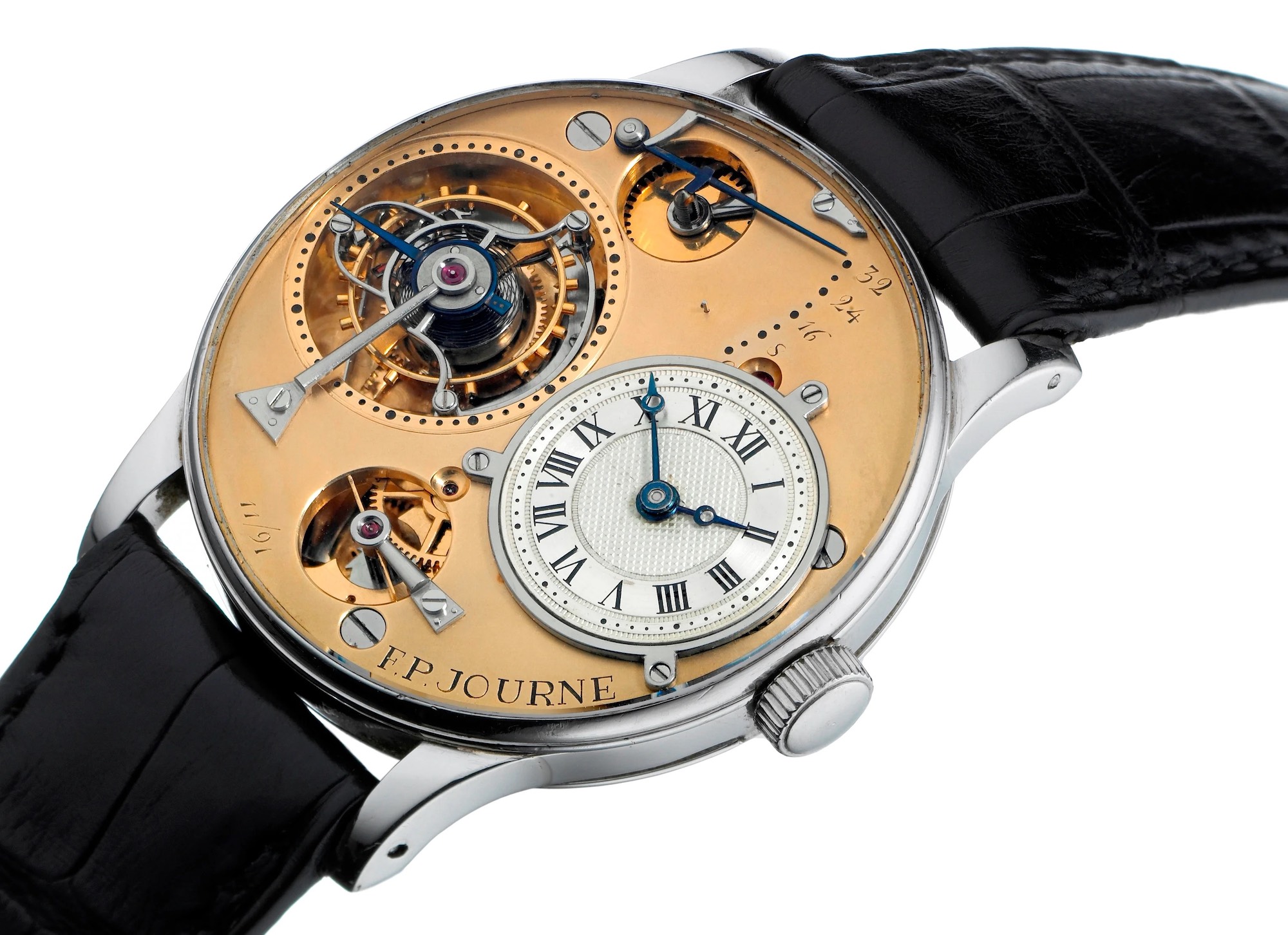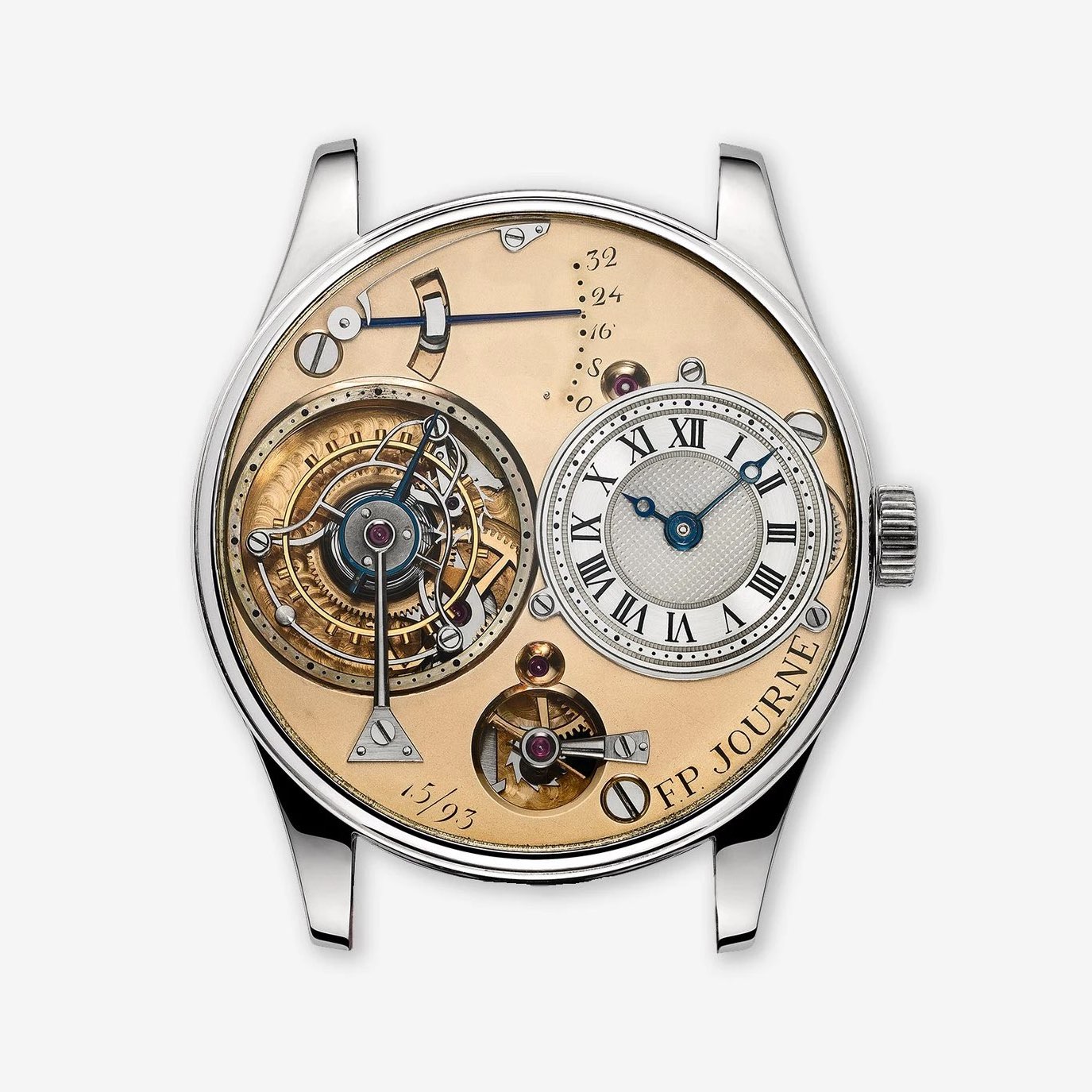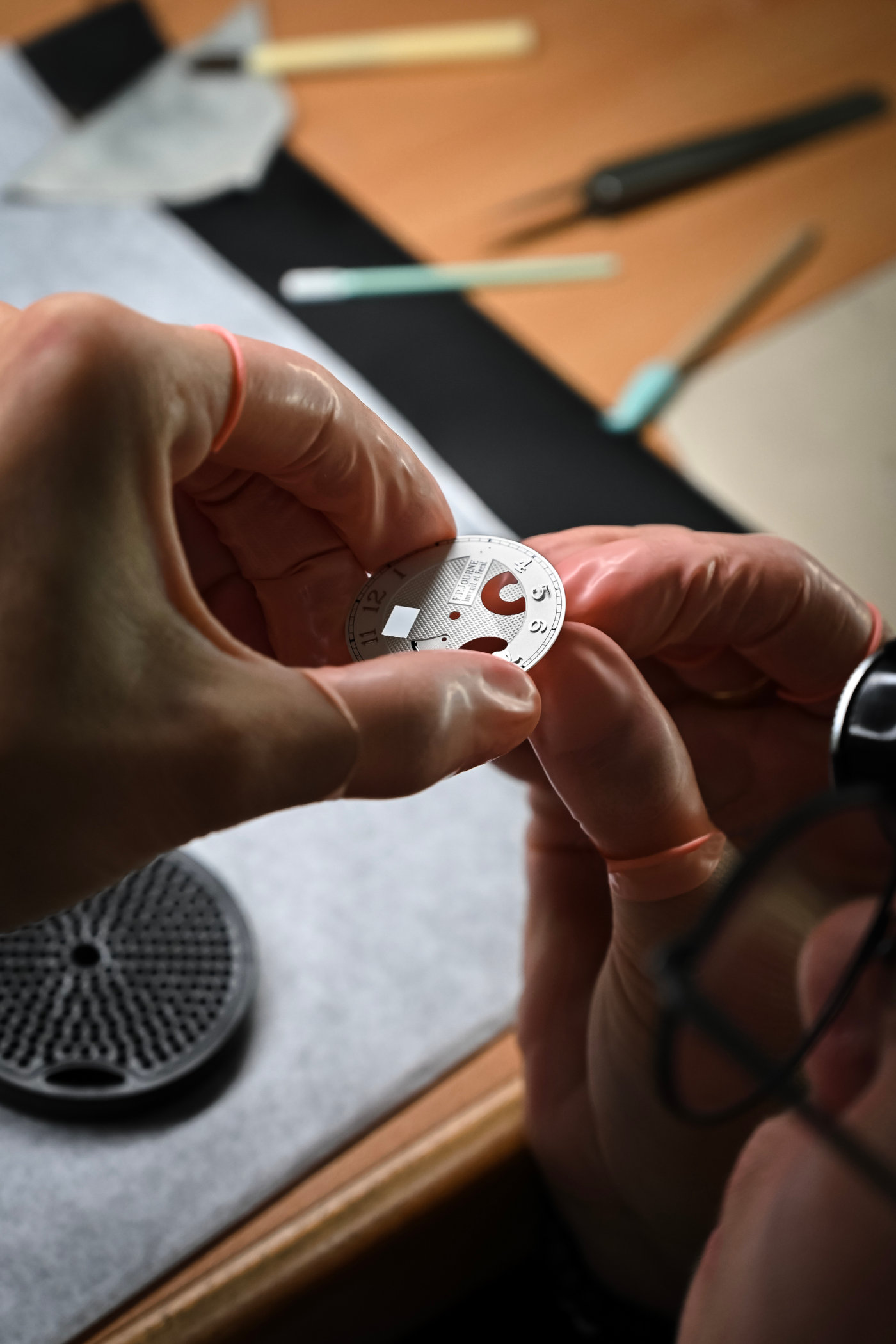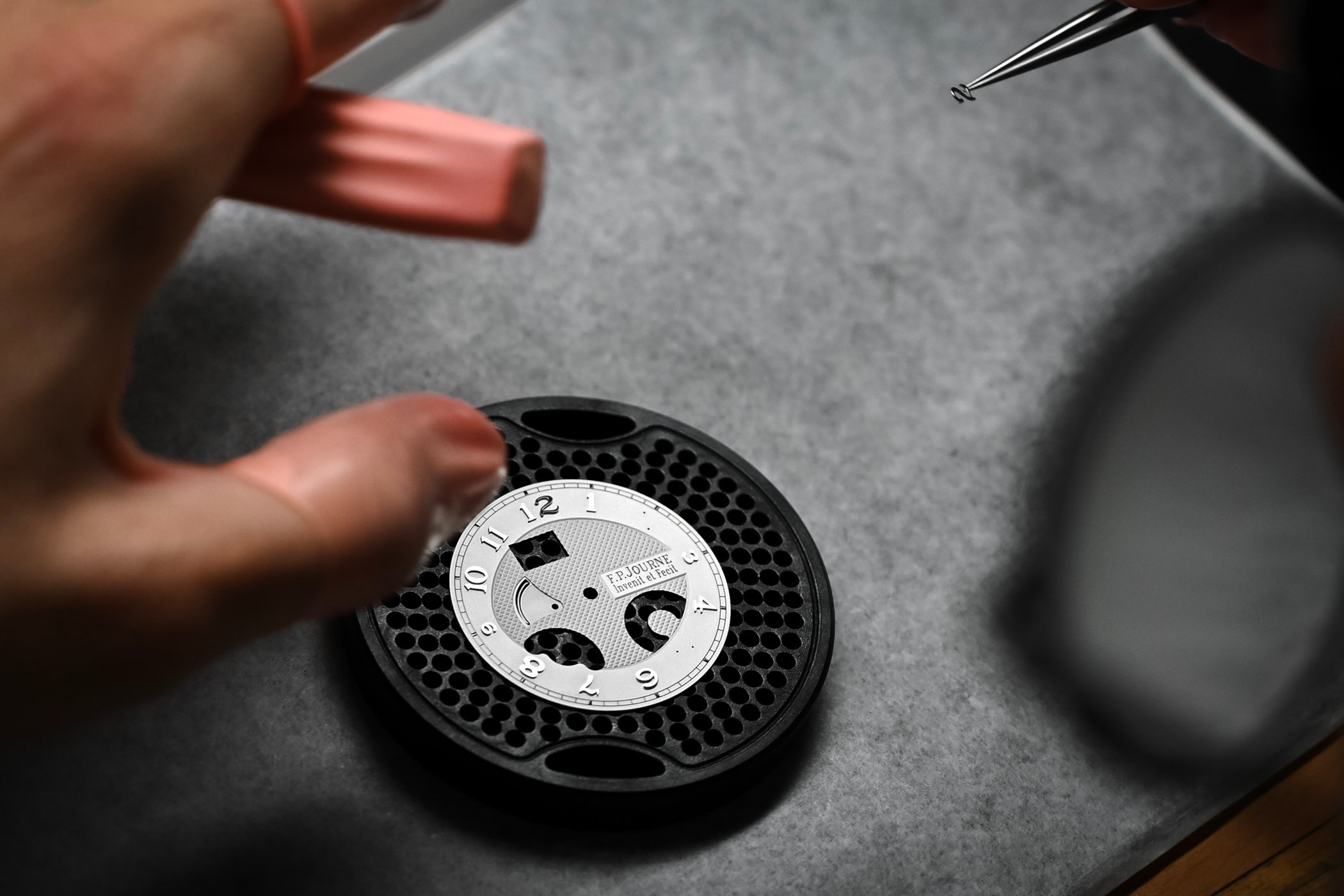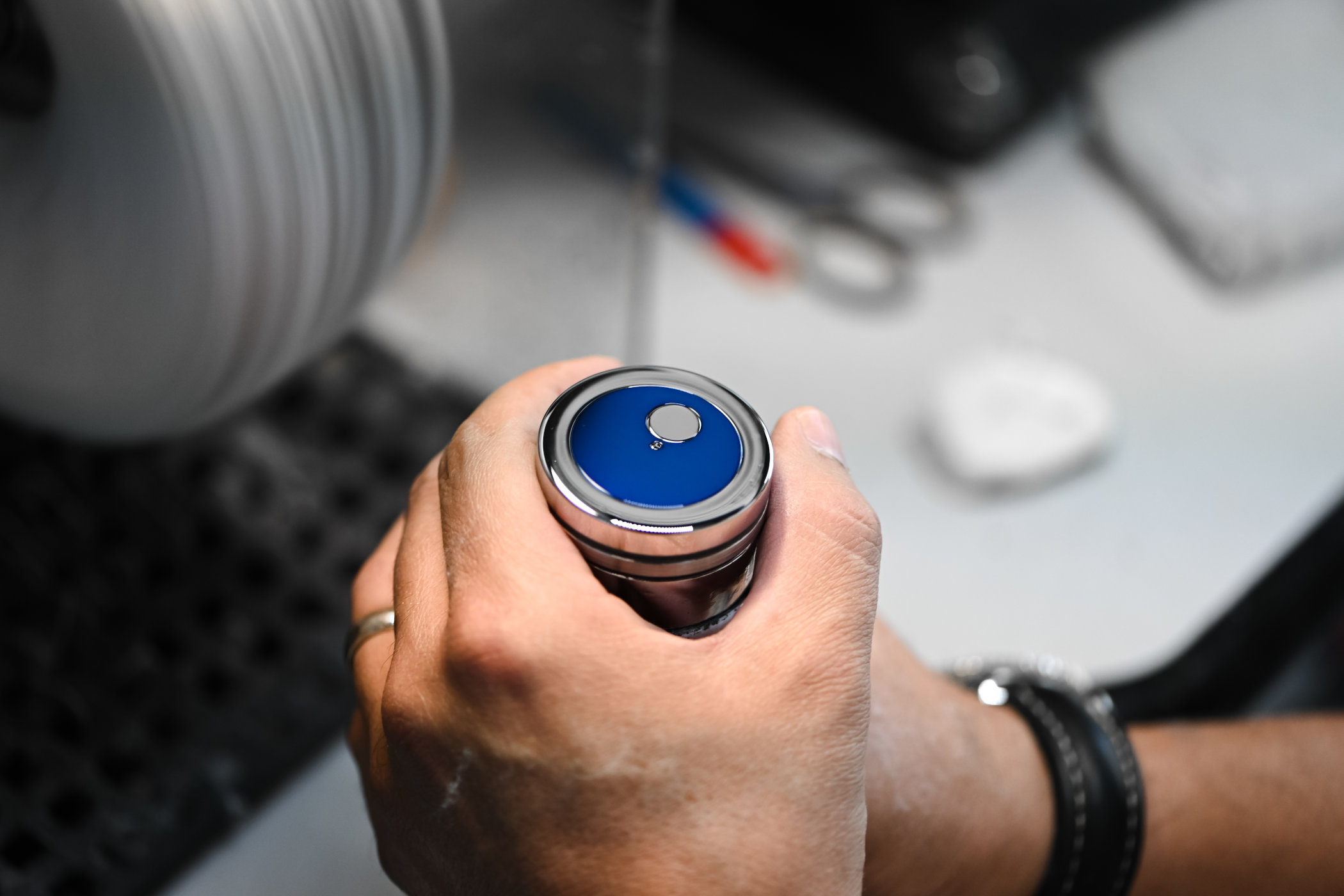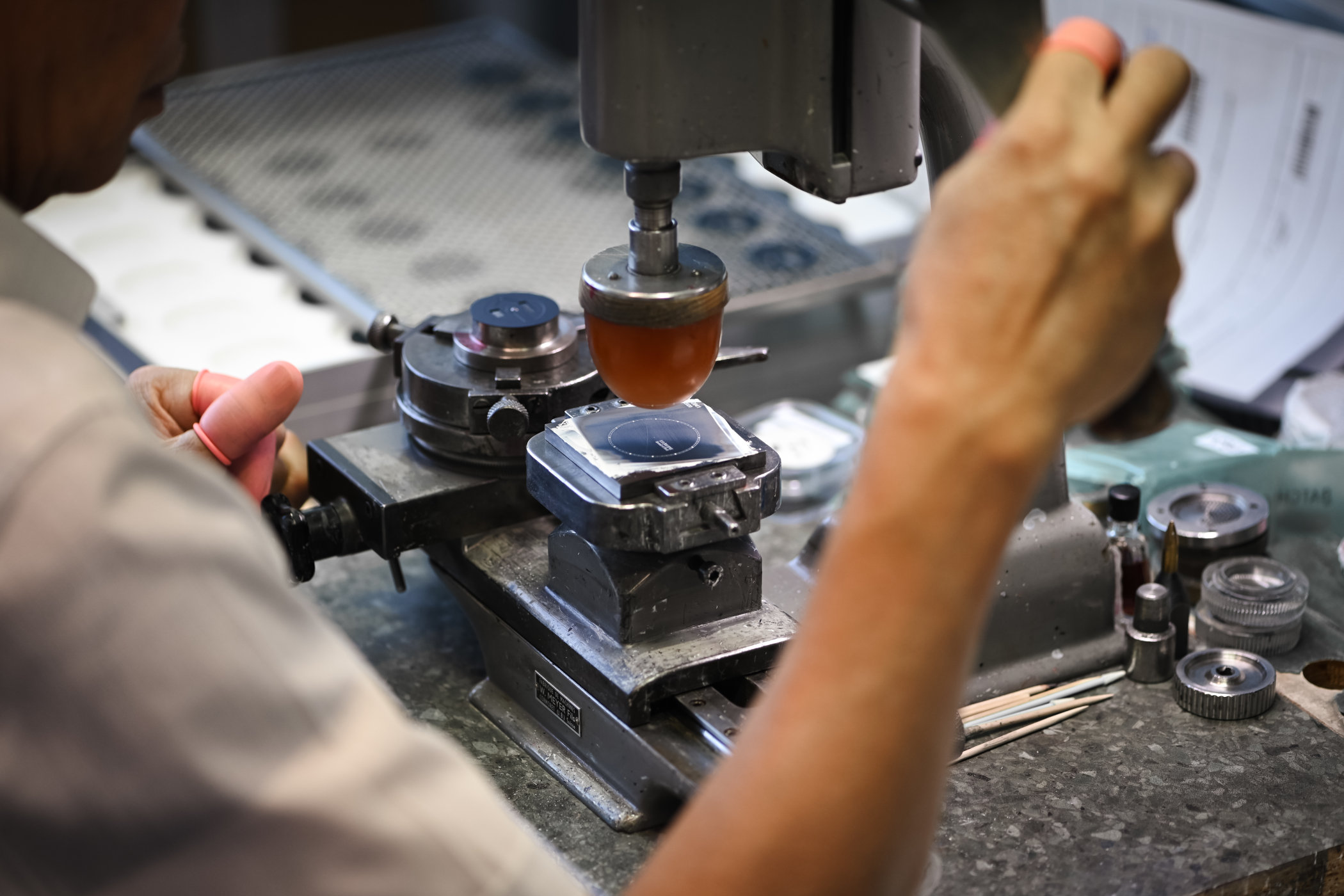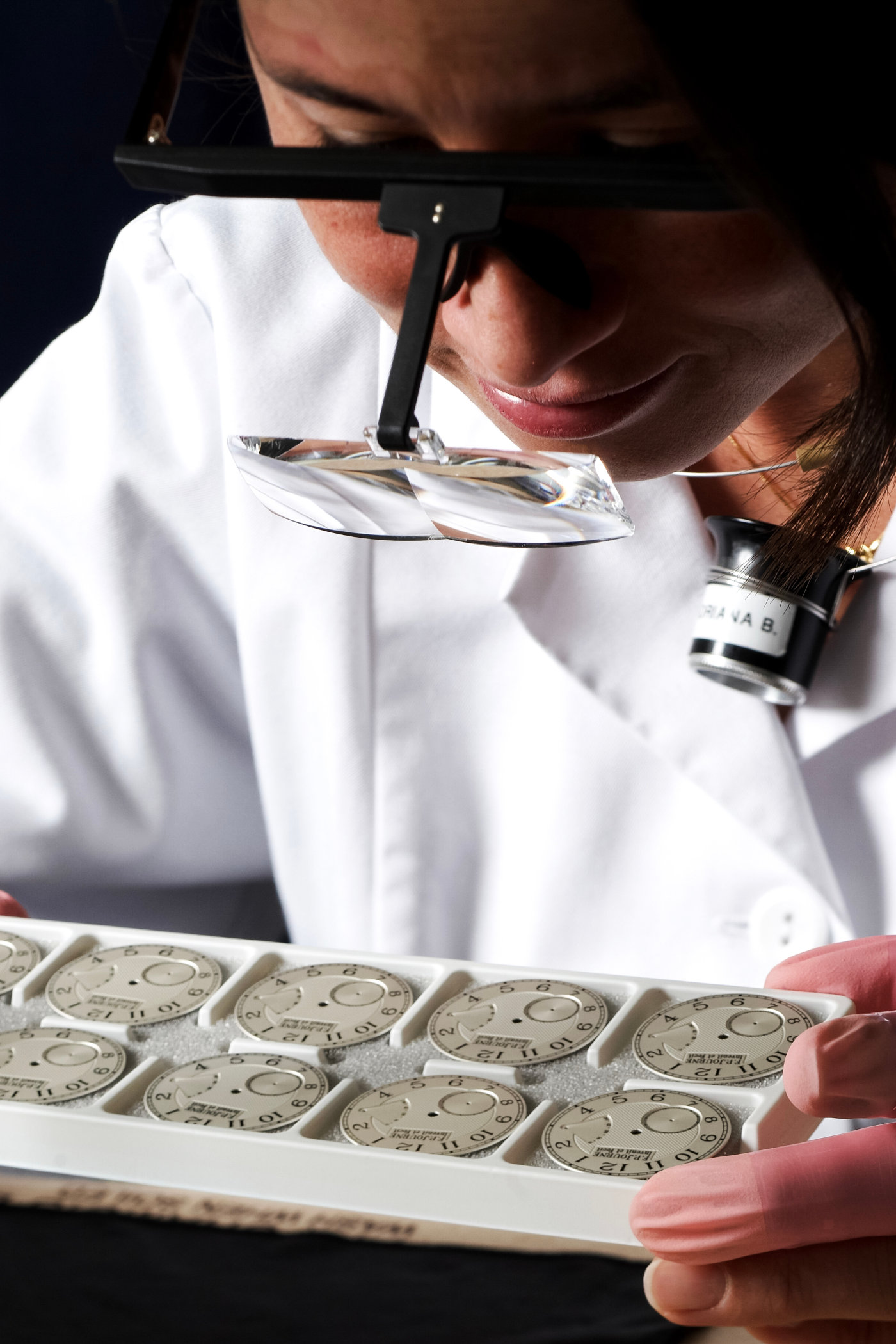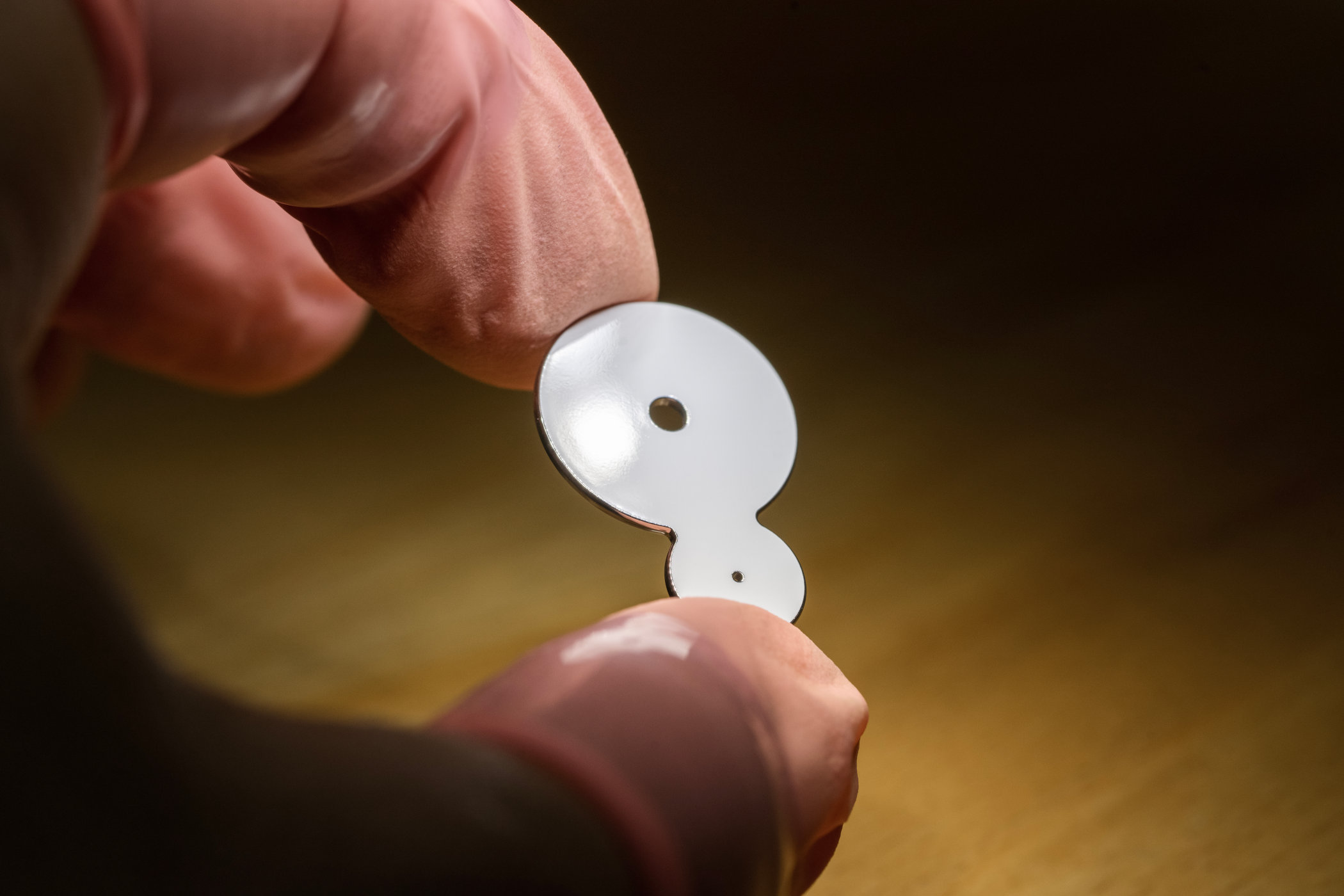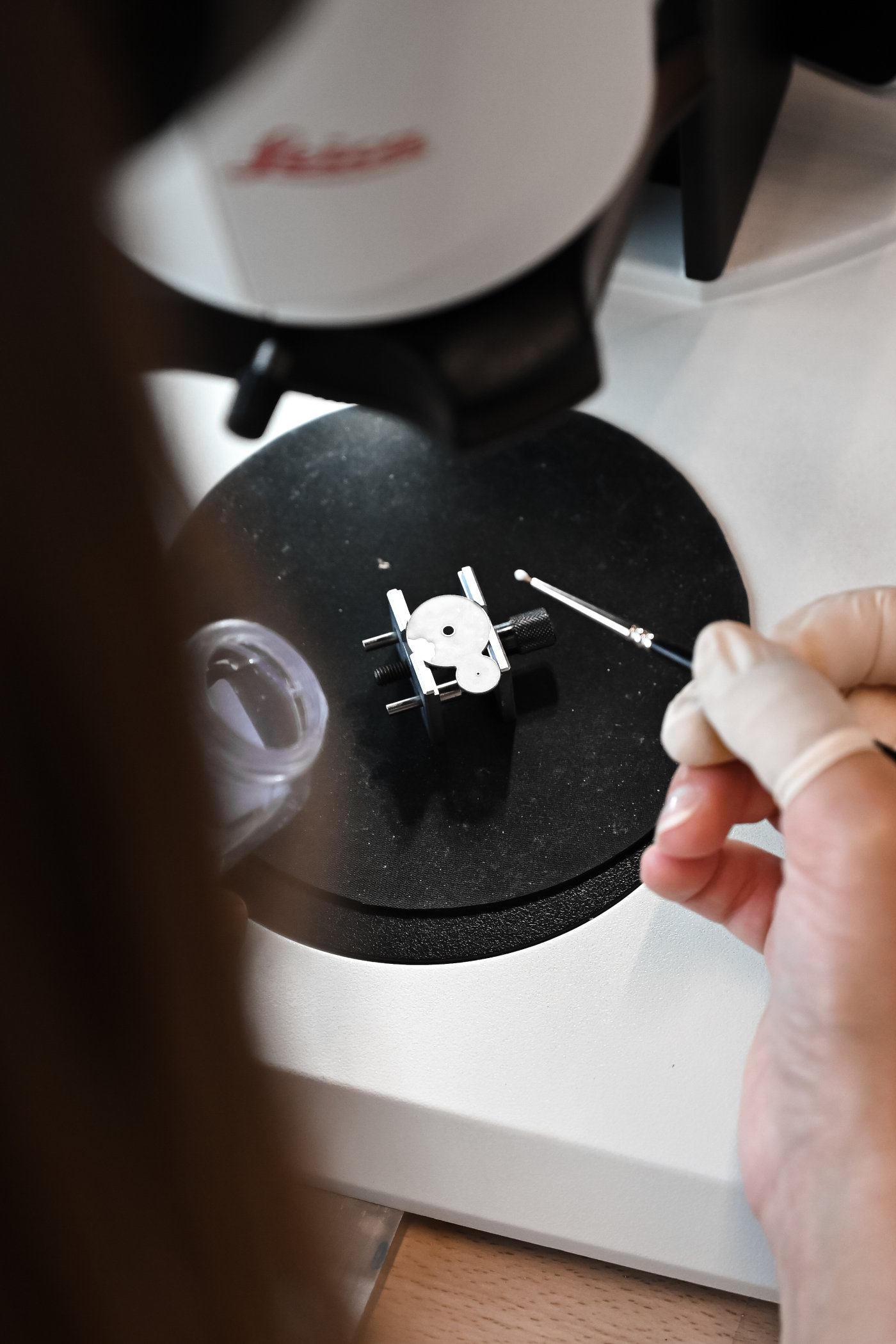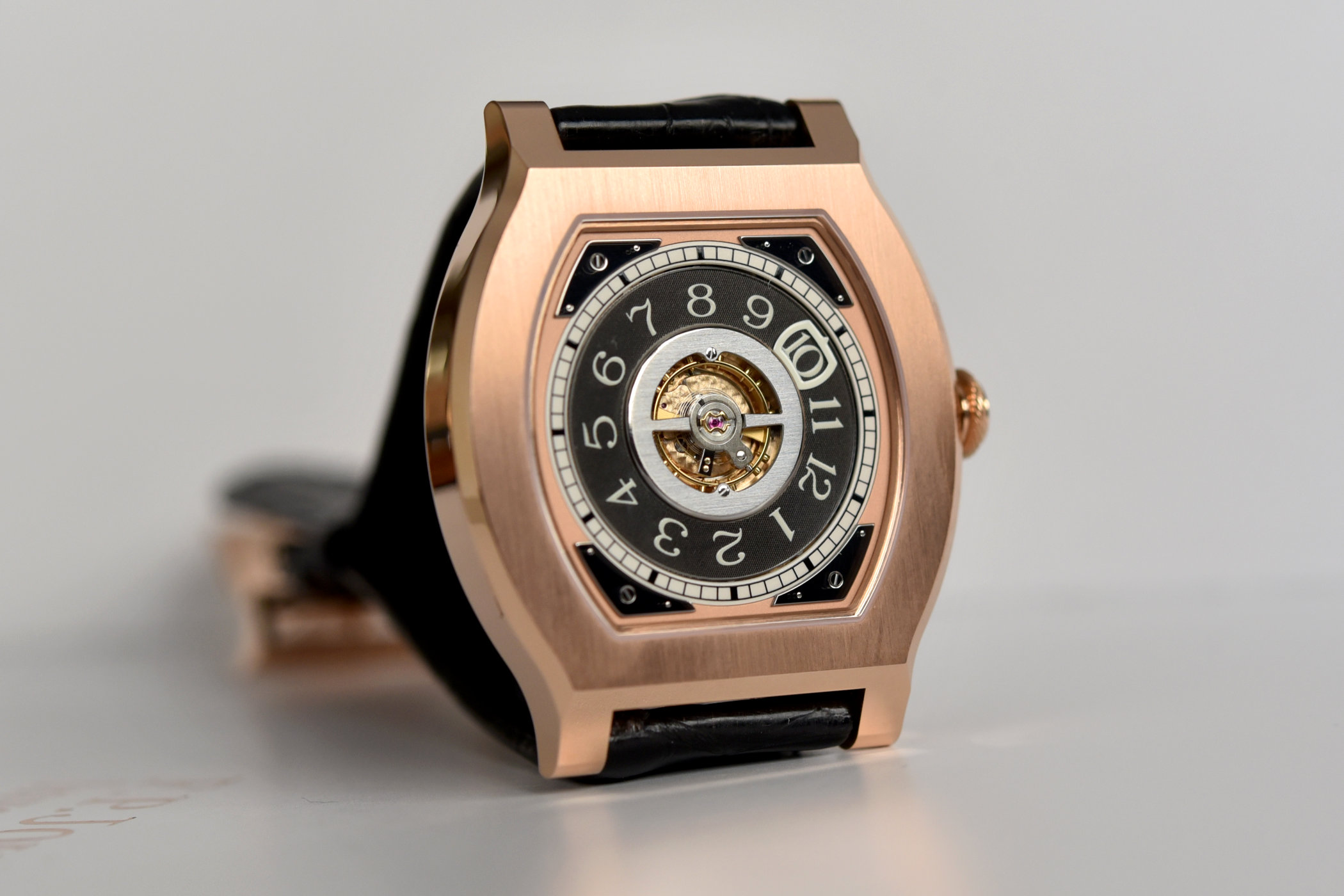Exploring the World of Cases and Dials by F.P. Journe
Manufacturing independence is at the heart of François-Paul Journe's business and always has been.
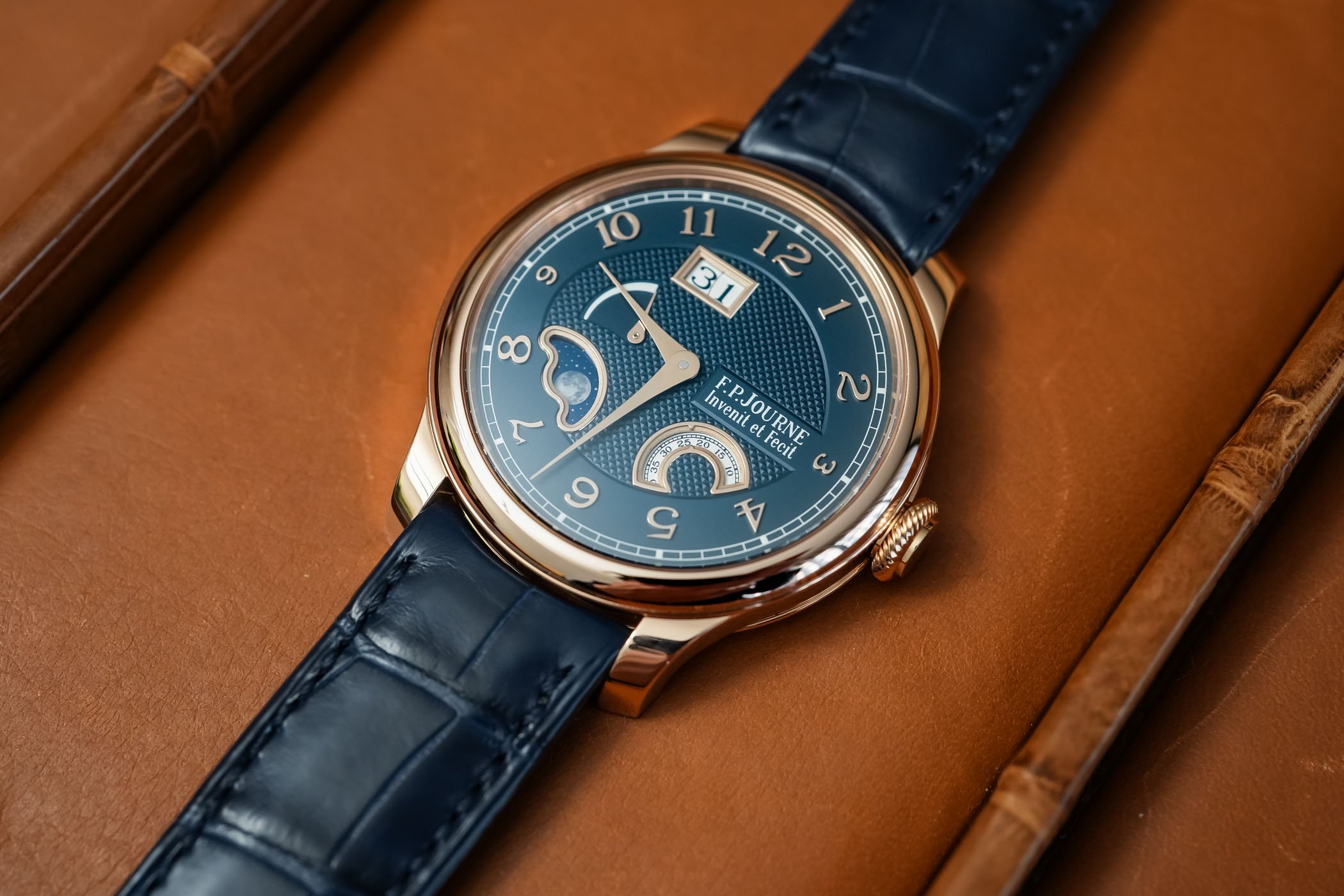
It’s common practice for brands to outsource certain steps in the manufacturing of watches to specialised companies. It is, in fact, how the vast majority of watchmaking entities operate. Cases, dials, movements, crystals and straps can all come from different suppliers around the world before being assembled into a fine mechanical watch. Watches by brands high and low have been produced this way for years, decades even. There is, however, a growing trend of ‘in-house‘, not necessarily concerning a movement. Sure, a movement designed and fabricated within the confines of a watchmaking atelier is the ultimate achievement, but the craft of making dials and cases in-house, to name just two elements, is not to be overlooked. We recently had the privilege to delve into the fascinating world of Cadraniers de Genève and Boîtiers de Genève, the case and dials makers for one of the most revered independent watchmakers: François-Paul Journe.
In September 2012, François-Paul Journe and Juan-Carlos Torres, then CEO of Vacheron Constantin, warmly welcomed guests, clients, collectors, and the press to the outskirts of Geneva. This gathering aimed to delve into the realm of high-end watch dial and case production by Cadraniers de Genève and Boîtiers de Genève as the two companies were relocating to the watch-centric area of Meyrin at rue Emma Kammacher. (At the time, Vacheron Constantin served as a co-shareholder of Cadraniers de Genève, stepping in for Harry Winston, who had exited the share capital a year earlier). Intriguingly, Boîtiers de Genève emerged from the case-making company Elinor, founded in 1957 in Clamart (near Paris), which FPJ had acquired after being its significant client for many years. In fact, François-Paul Journe made the case for his first pocket watch with Elinor. Reportedly, five of the ten employees moved to Geneva to continue collaborating with Journe.

Cadraniers de Genève is a company François-Paul Journe started in 2000, for a dial, to him, is “the face of the watch and its soul. If you don’t own your dial, you don’t own your soul. The same is true of the case, the frame around the painting. If either is missing, then you are lacking essential expertise”. Around 30 employees transitioned to the new premises, maintaining a commitment to quality and a high degree of craftsmanship by blending traditional artisan-style techniques with contemporary approaches.
Fast forward to June 2023, and François-Paul Journe unveils a new, proprietary building in Meyrin housing Cadraniers de Genève and Boîtiers de Genève. Both entities are now wholly owned by Montres F.P. Journe, showcasing Journe’s unwavering commitment to complete independence and heightened control over component quality. This strategic move solidified the company’s autonomy and prioritised enhanced working conditions for its 80 employees, with 45 people collectively engaging in around 20 crafts and ten operating the CNC machines. While this may sound like a snippet from a press release, a firsthand tour of FPJ’s case and dial manufacture underscored a previously overlooked facet of his commitment to watchmaking beyond the timepieces themselves.
For François-Paul Journe, pursuing independence has always been a guiding spirit. Born in 1957 in Marseille, he diverged from the conventional academic path at 14, leaving school without a clear direction. His journey took an unexpected turn when his mother sent him to spend a summer in Paris with his uncle, Michel Journe – an esteemed vintage clock restorer with exceptional skills and mechanical knowledge.
Under Michel Journe’s tutelage, young François-Paul revealed a natural talent for the craft. Convinced of his potential, Michel persuaded FPJ’s mother to enrol him in the Lycée Laperrine d’Apprentissage Technique to study horology. Despite excelling in his studies, François-Paul faced expulsion after two years, prompting him to seek an alternative path. Undeterred, he moved from Marseille to Paris to work for his uncle while continuing his education at École d’Horlogerie de Paris, ultimately earning his diploma in 1976.
The profound impact of his experiences in his uncle’s workshop – catering to discerning clients and having access to exquisite timepieces – played a pivotal role in shaping François-Paul Journe’s decision to create his own watches. Thus, the journey of invention and craftsmanship began. In the years leading up to the creation of his eponymous brand, FPJ embarked on various horological ventures. Notably, in 1979, he constructed a planetarium mechanism for Asprey of London. By 1983, he achieved a significant milestone by completing his inaugural pocket watch – a meticulously crafted timepiece featuring a tourbillon, twin barrels, and a détente escapement, all created from scratch.
In 1984, Journe explored resonance, crafting a watch for a paying client. The subsequent year saw the establishment of his independent workshop in 1985, marking a pivotal moment in his horological journey. Journe showcased his exceptional craftsmanship by taking on challenging commissions from brands like Cartier or creating a series of Breguet Sympathique clocks for Asprey. However, proper recognition from established brands or groups proved to be elusive. Major brands hesitated to credit the artisans they collaborated with. Unwilling to accept this status quo, Journe took a bold step in 1994, establishing his independent brand.
Before that, François-Paul Journe faced rejection from Breguet when he offered his tourbillon wristwatch. In 1991, undeterred, he created three prototypes of a wrist-worn tourbillon. One of these prototypes, featuring his unique tourbillon design and a remontoire, was displayed at the Académie Horlogère des Créateurs Indépendants (AHCI) booth during Baselworld. Despite this achievement, Baselworld had yet to acknowledge Journe’s remarkable talent.
In a twist of fate, a famous anecdote recounts that a waitress in a restaurant, impressed by the watch Journe was wearing (his tourbillon with remontoire), played a pivotal role in inspiring him to pursue independence further. Bolstered by confidence and surrounded by friends, FPJ acquired a workshop on rue des Maraîchers in central Geneva to house production. He launched a subscription campaign to finance operations, inviting trusting clients to contribute funds for a watch yet to be made.
The Souscription Tourbillon, priced at CHF 27,500, required a 50% deposit in 1998, with the watches set for delivery in 1999. Housed in a 38mm platinum case with a rhodium-plated brass movement, the timepiece featured a small dial indicating the time at three o’clock, a power reserve at eleven, and two apertures at nine (tourbillon) and six o’clock. Every handmade detail exemplified the artisanal spirit, with exposed screws and contrasting surfaces defining the appeal of these early pieces.
In 1999, at Baselworld, François-Paul Journe boldly unveiled his brand, defying prevailing industry norms. Perhaps another anecdote (sounds very accurate, though), but when asked about his motivation, Journe bluntly stated he was “fed up of giving caviar to swine”. The subsequent year marked a pivotal moment as Journe presented his creations independently, distinct from the AHCI umbrella. He showcased three models: Tourbillon Souverain, Chronomètre à Resonance, and a unique Grande et Petite Sonnerie. The watches gained traction, with almost 50 retailers worldwide purchasing them.
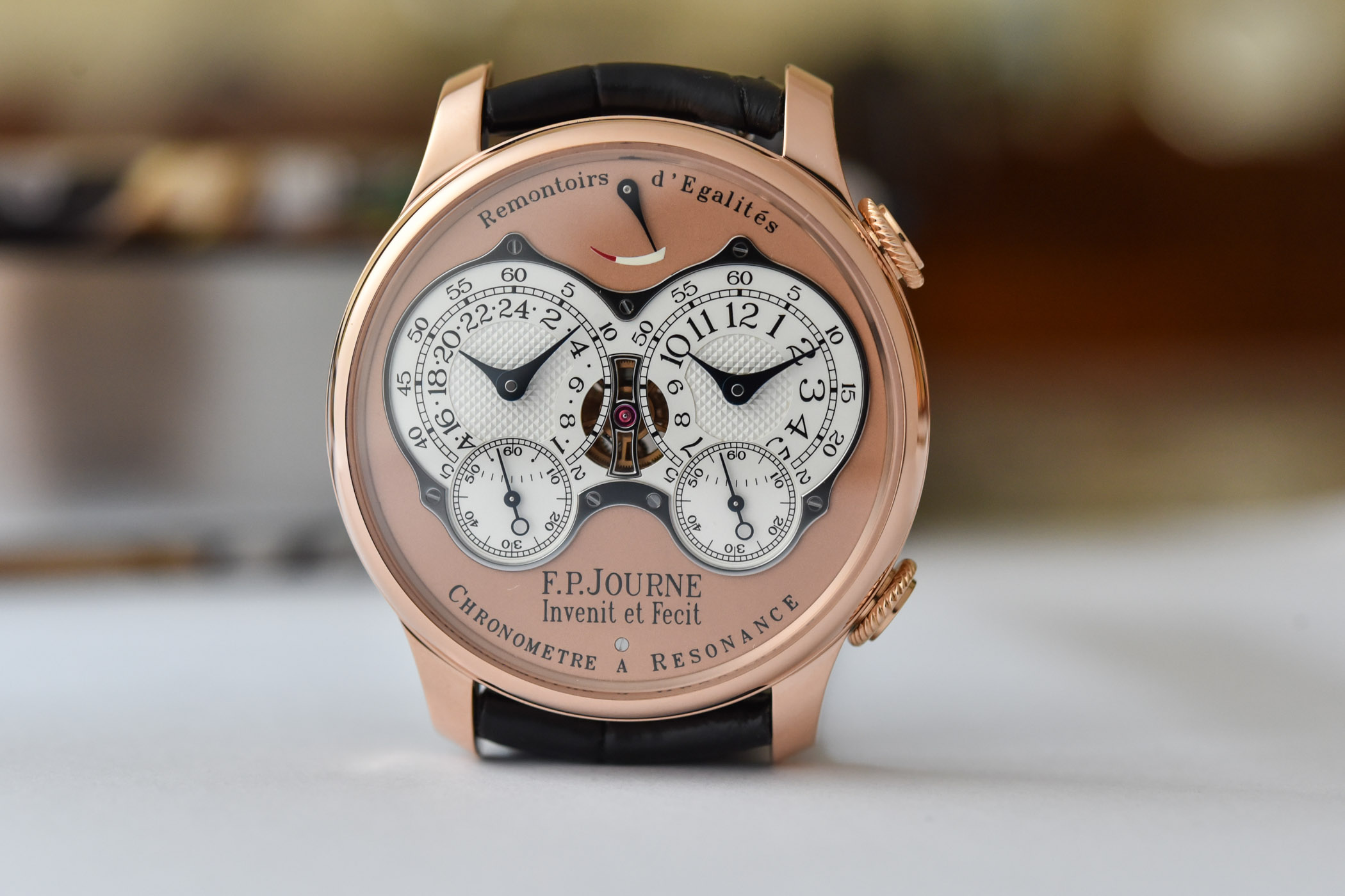
Now, the brand has a boutique network worldwide. It was different then, and retailer trust was essential, from people like Pierre Halimi, later to become the brand’s president in the US, or Serge (Gino) Cukrowicz, a retailer from Belgium, who became the first partner in what would later become Montres F.P. Journe at the end of the 1990s. And so, the Baselworld of 2000 became a turning point in François-Paul Journe’s career as his dream of independence rapidly materialised.
Now, one might wonder about the connection between this narrative and the cases and dials in Meyrin. Amidst the prevalent talk of in-house manufacturing, vertical integration, and independence used by brands as marketing tools, visiting the Cadraniers de Genève and Boîtiers de Genève emphasises that the spirit of freedom, profound respect for watchmaking craftsmanship and the individuals preserving knowledge and skills are vibrantly alive in these workshops.

And there are a lot of workshops. Operating across 13 specialised sections, employees of Cadraniers de Genève skillfully execute tasks ranging from satin finishing, sandblasting, and polishing to appliques, enamelling, tampography, electroplating, varnishing, and hand engraving. Surprisingly enough, sandblasting is still done using natural sand, and the paint used to print symbols on the dial via a transfer pad is mixed by hand.
The company makes dials for undisclosed clientele, and few names are known – the historical relationship with Vacheron Constantin remains (in 2012, Cadraniers produced about 11,000 dials per year, with the majority going to Vacheron; the numbers nowadays are kept secret). There’s Laurent Ferrier, to name one, and, of course, Montres F.P. Journe. As you probably know, in the intricate process of creating an F.P. Journe timepiece, the genesis lies in the imaginative conception of the dial, with the movement playing a secondary role. In recognition of the importance of the dial as the initial focal point in watch appreciation, stringent quality controls are enforced at nearly every production stage. Given F.P. Journe’s commitment to maintaining a slender base plate for the dial, challenges arise, especially when subjected to high temperatures, leading to occasional distortions that necessitate delicate flattening. This process often results in the discarding of plates, underscoring the uncompromising dedication to surface perfection. For enamel dials, though, the solution lies in covering both sides of the dial plate with enamel and applying patterns to the dial plate’s back side to avoid possible cracking.
The Boîtiers de Genève occupies a ground floor at the new building; here, we find CNC machines, sandblasting and microblasting areas, and soldering and laser engraving posts. There’s also a ceramics workshop, a polishing department, and an assembly room. The latter includes workbenches dedicated to the restoration of dials, with clients sending what needs to be repaired along with instructions. With facilities for dials available to outside clients, cases and bracelets are exclusively manufactured for Montres F.P. Journe, aligning with the brand’s annual production target of about a thousand watches.
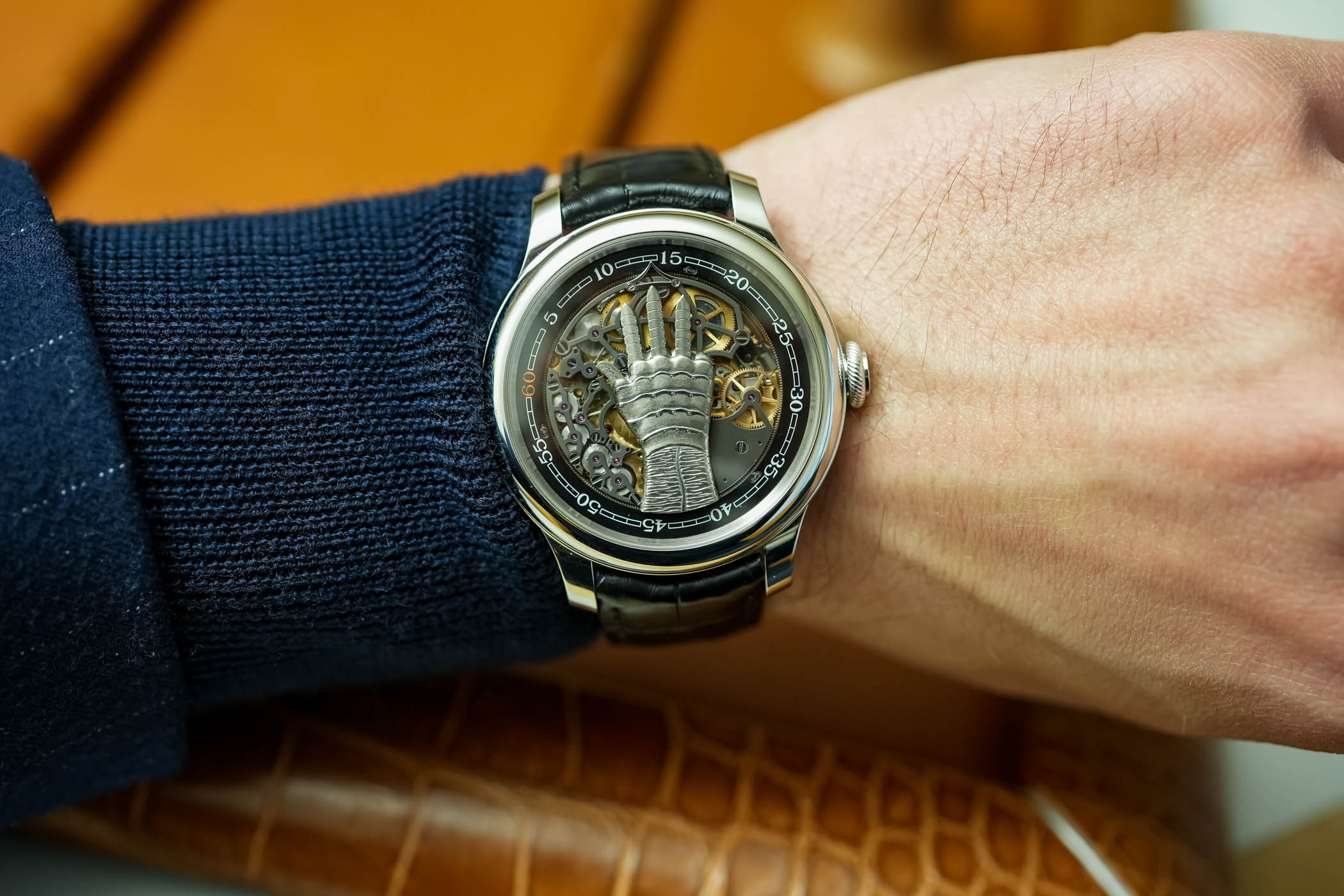
In summary, FPJ’s independent Cadraniers de Genève and Boîtiers de Genève manufacturing facilities, and the one in the heart of Geneva (see below) where movements are made and watches get final assembly, offer significant advantages, underscoring the importance of François-Paul Journe’s approach and contributing to the authenticity of his brand. To think that the FPJ person and the brand have direct control over the production of Journe watches is of great value. There’s control over quality, as true in-house facilities ensure each component meets the brand’s exacting standards. Then follows innovation and customisation, freedom to experiment with designs, materials, and technologies, and flexibility and adaptability to technological advancements.

But manufacturing independence also allows François-Paul Journe to preserve traditional craftsmanship and artisanal skills; of these, he is a very adamant supporter. Skilled artisans are employed and trained to keep and pass down time-honoured techniques, ensuring the continuation of craftsmanship that defines this exceptional brand’s identity. We often think of François-Paul Journe as a watchmaker designer of his timepieces, but he is also a talented businessman. Independence brings consistency in the supply chain, reduces dependency on external partners, allows rapid prototyping and quick iterations of designs, efficient testing and refinement of new concepts. And there’s long-term cost efficiency.
All these advantages play a crucial role in shaping the brand’s success, resonating with customers who appreciate authenticity, craftsmanship, and a commitment to excellence, making François-Paul Journe one of the most extraordinary watchmaking personalities of our time.
For more information, please visit FPJourne.com.

